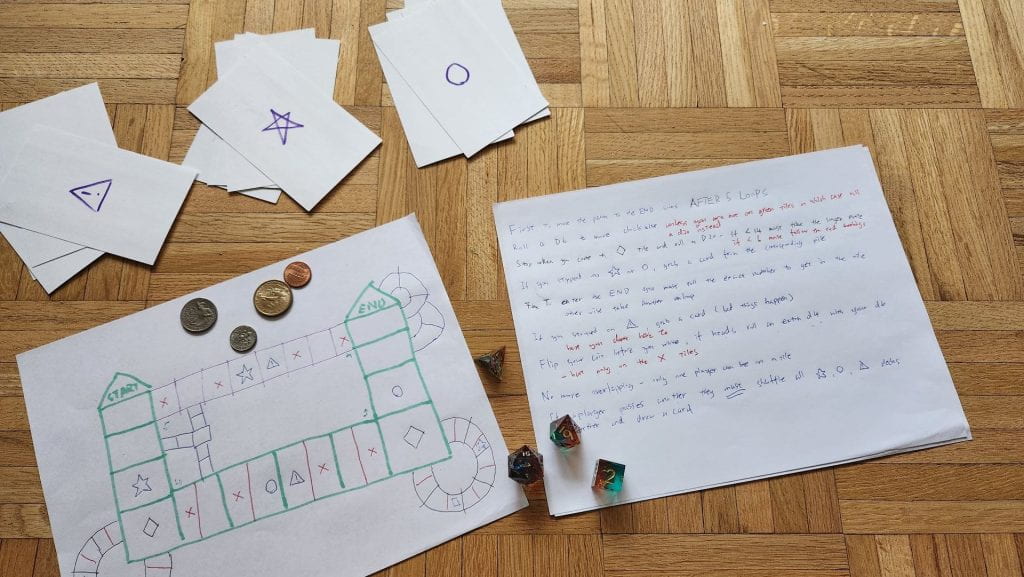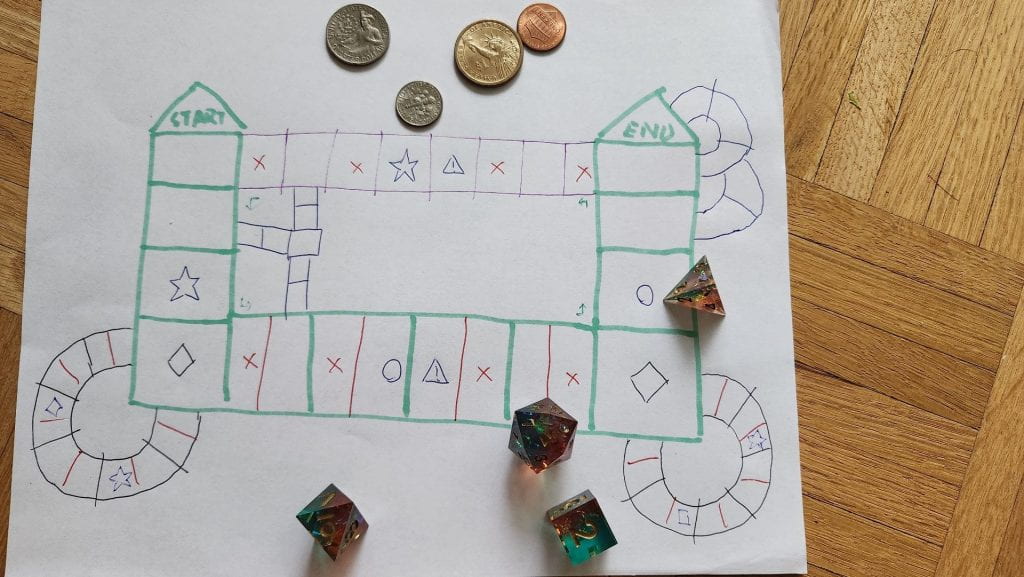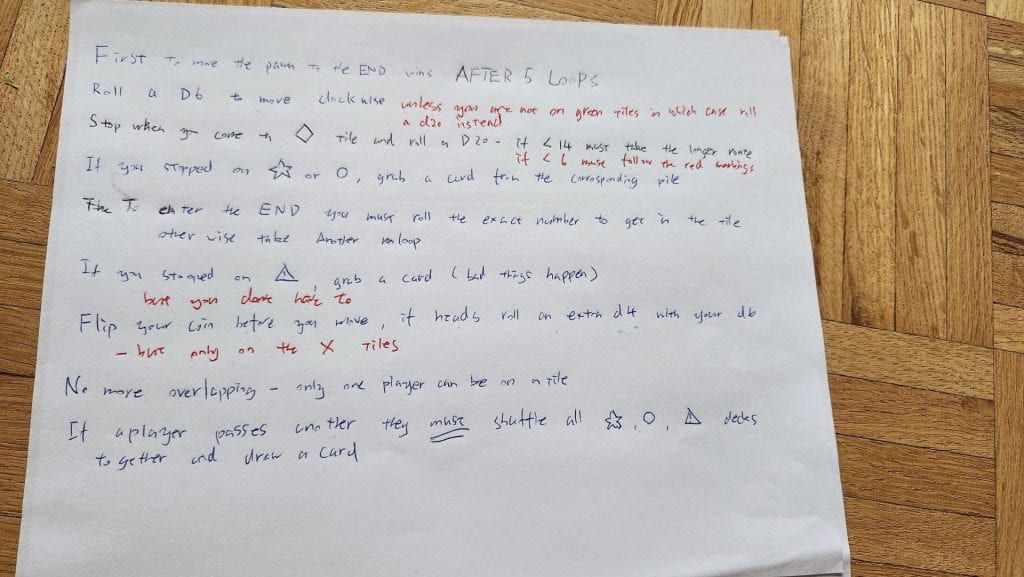By Luca Sandoval
This is a game. It’s supposed to be fun. Here’s what you need to play it:
- A deck of face-down rule cards (provided.)
- A large handful of coins (not provided, obviously.)
The rules are very simple.
- There are two players. They each take turns flipping a coin, calling heads or tails before it lands.
- The person who guesses correctly gets a point.
- The first to one thousand points wins.
If at any point during the game you decide you aren’t having fun, feel free to draw the top card from the pile of rule cards. This should help make the game more fun.
————————————————————————————————-
(This section is not a part of the score.)
The rule cards provided are small pieces of paper that have the following messages, in order:
- New rule: Correctly calling the coin is now worth 10 points, but if you get it wrong, you lose a point instead.
- New rule: Each player can recruit another player as their additional team member. Those two players also flip a coin, and the points they either win or lose belong to the team.
- New rule: Each team should recruit three more players. At this point, it’s probably worth establishing some kind of team organizational structure. The original player is the ‘team captain,’ of course, but you should ask the new hires how they feel about that. They may choose to assist your cause, or not, I suppose.
- New rule: Add all of the coins you have left to the game. Coins are now valuable, maybe even more valuable than points (that isn’t currently clear). After all, at the end of the day, you have to put food on the table and keep the lights on, and points aren’t going to pay those bills. As a secondary requirement for victory besides reaching one thousand points, your team should also ensure they are financially better off than the other team by the end of the game.
- New rule: The team members have unionized. Team captains should have seen this coming. They all demand to be paid a fair wage in coins and won’t keep playing until those demands are met. As a new requirement for victory on top of the old ones, negotiate a fair contract with the team members.
- New rule: There’s been an economic recession. Everybody is hit hard, none more so than the innocent coin-flipping industry. Inflation has skyrocketed and coins and now next to worthless. You can sell back your team’s coins to the bank for fifty points each, which seems like an okay deal. However, as a consequence of the recession, the new requirement for winning is one hundred thousand points.
- New rule: There’s really no point in playing games anymore given the state of the economy.
Reflection:
My score was largely inspired by some of the works we saw relating to chess, and how artists in this movement would create twists on games that made them nearly impossible to play- and in the process allowed for the players to find their own fun using a broken ruleset. One that came to mind for my design was Yoko Ono’s White Chess Set, which featured an entirely white chessboard. This seems to make the game impossible to play, but in playing it I imagined that it might be its own sort of fun to attempt to remember which pieces were your own, or maybe just forgo the original rules altogether and simply play around with the broken ruleset. My score attempts to capture this energy by starting with a simple ruleset and slowly adding mechanics that derail it more and more until players are forced to find their own fun in the chaos. I also wanted the playing experience to be funny over anything else, thus the increasing absurdity of the rules.
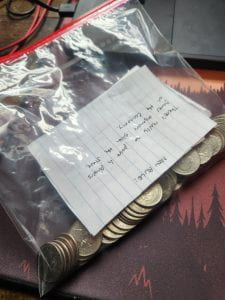
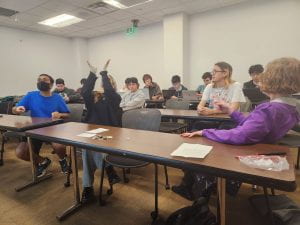
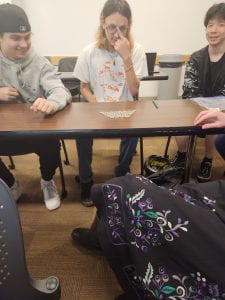
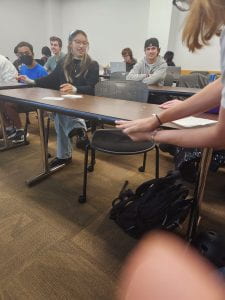
I was able to test my score two separate times, so it went through several revisions before the final. I was happy with the humor element of the score, as I feel in both cases the absurdity of the rules led to players creating comical situations, such as ‘firing’ their team leader or stealing/hoarding all the coins for their team. I do think that this score could be a bit more open-ended than the version I provided, and while I like the idea of the scenarios I’m providing for players (as a vehicle to create further comedy), it might be worth exploring a version of the game with less specific steps and punchlines while still maintaining the spirit of the score.


